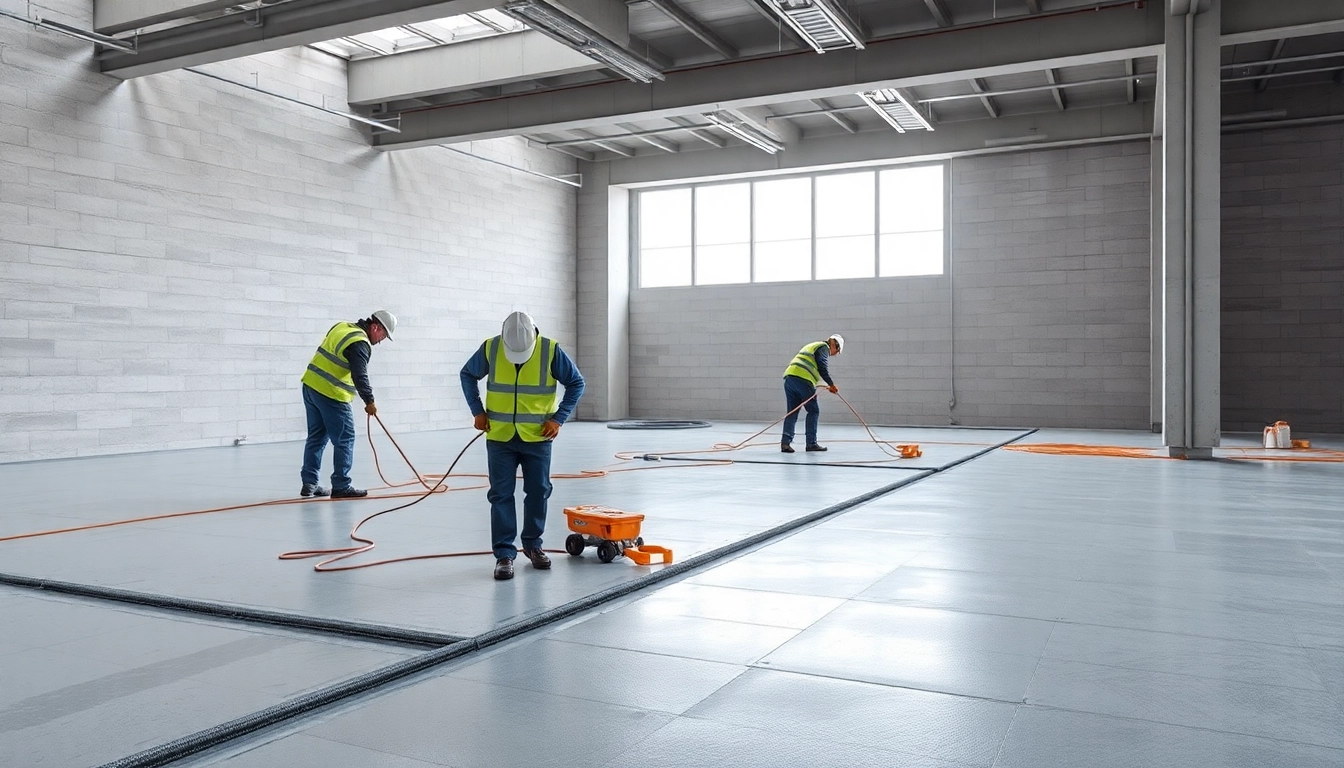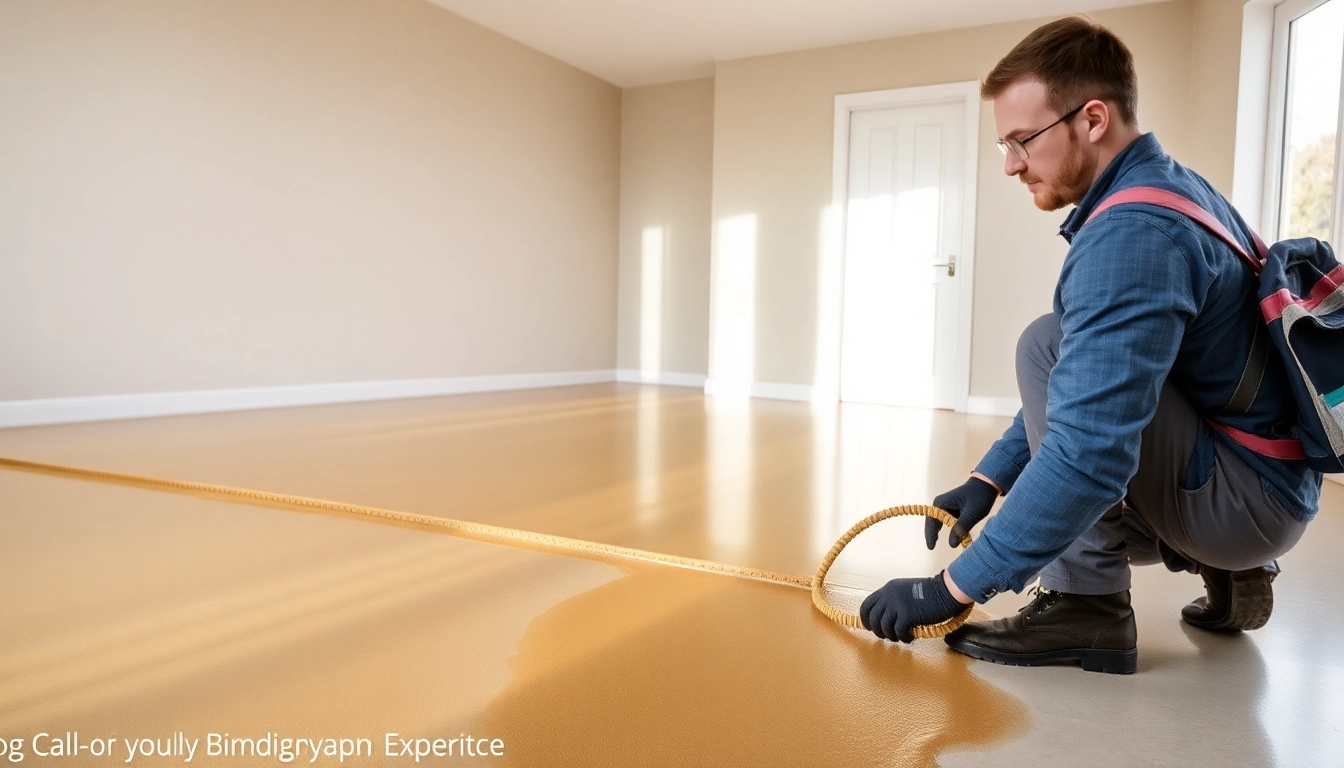Understanding Liquid Screeding and Its Benefits in Birmingham
In the modern construction and renovation sectors across Birmingham, the choice of flooring solutions plays a crucial role in ensuring durability, efficiency, and aesthetic appeal. Among the innovative techniques gaining widespread popularity is Liquid screeding Birmingham. This advanced floor finishing method offers numerous advantages over traditional screeding, making it an ideal choice for both residential and commercial projects. Whether you’re planning a new build or upgrading an existing property, understanding the nuances of liquid screed can significantly impact your project’s success.
What Is Liquid Screed and How Does It Differ from Traditional Methods?
Liquid screed is a flowing, self-compacting material composed primarily of cement, sand, water, and proprietary admixtures. Unlike conventional sand and cement screed that requires manual spreading and levelling, liquid screed is pumped directly onto the prepared subfloor, spreading uniformly across the surface with minimal effort. This method ensures a level, smooth surface ready for flooring installation in a fraction of the time traditional methods demand.
Traditional screeding involves mixing dry components, laying them manually, and waiting for curing — processes that can extend over several days or even weeks. Conversely, liquid screeding offers rapid application, quicker drying times, and reduced labour costs. Its self-levelling nature results in consistent thickness and surface quality, crucial for high-precision flooring systems, particularly in underfloor heating applications.
Advantages of Choosing Liquid Screed for Your Birmingham Property
Opting for liquid screed presents a strategic benefit for Birmingham builders, homeowners, and property developers. Key advantages include:
- Speed of Installation: Liquid screed can be applied swiftly, reducing project timelines and enabling faster completion.
- Excellent Thermal Conductivity: When combined with underfloor heating systems, liquid screed maximizes heat transfer, enhancing energy efficiency and occupant comfort.
- Superior Surface Finish: Its self-levelling property ensures a smooth, flat surface, reducing the need for additional smoothing or preparation.
- Reduced Waste and Material Loss: Pumping minimizes excess material handling and wastage on-site.
- Versatility in Application: Suitable for various subfloor types, including concrete slabs, old floors, and heated systems.
- Enhanced Durability: Properly installed liquid screed provides long-lasting support, resisting cracking and movement over time.
In Birmingham’s dynamic property market, where timely and cost-effective projects are essential, these benefits position liquid screed as a preferred choice for many developers and homeowners.
Key Features of Modern Liquid Screeding Applications
Contemporary liquid screeding solutions incorporate cutting-edge technology and materials to optimize performance. Some of the key features include:
- Pumpability: Facilitates rapid, precise placement even in challenging spaces or complex floor plans.
- Fast Drying Times: Typically, liquid screed dries within 24-48 hours, depending on thickness and environmental conditions.
- High Flow Properties: Ensures seamless coverage, eliminating air pockets and surface irregularities.
- Compatibility with Underfloor Heating: Designed to coat and insulate heating pipes efficiently, promoting uniform heat distribution.
- Eco-Friendly Components: Many modern formulations emphasize sustainability, low VOC emissions, and minimal environmental impact.
Step-by-Step Guide to Installing Liquid Screed in Birmingham Homes and Businesses
Initial Assessment and Surface Preparation
The process begins with a comprehensive site survey and assessment of the existing floor substrate. The installer evaluates the condition, cleanliness, moisture levels, and compatibility with liquid screed. Surface preparation typically involves removing debris, sealing cracks, and ensuring correct moisture barriers to guarantee optimal adhesion and curing.
Proper preparation is vital for longevity and performance. For instance, older concrete slabs may require leveling overlays or priming to enhance bonding. Budgeting for these preliminary steps ensures a smooth application process and minimizes future issues.
Application Process and Equipment Used
Once the surface is ready, professional installers employ high-powered pumps to deliver the liquid screed mixture directly onto the prepared subfloor. Skilled operators carefully control the flow rate and distribution to achieve a consistent thickness, typically ranging from 50mm to 100mm depending on project specifications.
Advanced screeding equipment, such as boom pumps and automated spreaders, facilitate coverage in large or complex areas, reducing manual effort and improving precision. The flowable nature of the material allows it to settle naturally, filling gaps and creating a perfectly level surface.
Throughout application, quality control measures include checking levels regularly and adjusting flow to prevent unevenness or air pockets.
Drying Time and Final Inspection
After installation, the curing process begins. Environmental factors like temperature and humidity influence drying times, but generally, liquid screed can be ready for light foot traffic within 24 hours. Complete curing may take up to 28 days, during which moisture levels decrease and strength develops.
Final inspection involves assessing surface flatness, thickness accuracy, and adhesion quality. Any minor imperfections can often be rectified with minimal intervention. Once cured and inspected, the surface is prepared for the final flooring layer.
Popular Applications of Liquid Screeding in Birmingham’s Construction Projects
Underfloor Heating Systems and Thermal Efficiency
One of the most prevalent uses of liquid screed in Birmingham is in conjunction with underfloor heating systems. Its flowability allows for uniform coating of heating pipes, greatly improving heat transfer and reducing energy consumption. This synergy results in faster warm-up times, increased overall efficiency, and improved comfort in both residential and commercial spaces.
By using specialized formulations compatible with heating elements, installers ensure the screed acts as an efficient thermal conduit, contributing to sustainable building practices and lower utility bills.
Commercial and Residential Flooring Projects
From retail outlets to luxury residences, liquid screeding provides a high-quality base for various floor finishes such as tiles, wood, vinyl, or carpets. Its ability to create super-smooth surfaces reduces installation time and minimizes the risk of future defects, making it a cost-effective solution for large-scale commercial developments in Birmingham.
Project examples include gym floors, office spaces, and luxury apartments where impeccable finishes and prompt project timelines are demanded.
Renovations and Property Upgrades in Birmingham
Existing buildings undergoing refurbishment benefit significantly from liquid screeding’s adaptability. It can be applied over old concrete, ensuring level and stable floors without extensive demolition. This flexibility reduces disruptions and expenditure, while enhancing the overall property value for owners seeking modernization or insulation improvements.
Choosing the Right Liquid Screeding Provider in Birmingham
Criteria for Selecting Quality Contractors
Choosing a reputable supplier and installer is critical to achieving optimal results. Look for providers with proven experience, robust portfolio examples, and industry certifications. A quality contractor should offer comprehensive services—from site assessment and precise application to post-installation support.
Questions to Ask Potential Suppliers
When engaging with prospective providers, consider questions such as:
- What types of liquid screed do you supply, and are they suitable for my project needs?
- Can you provide references or case studies from previous Birmingham projects?
- What is your typical project timeline and drying schedule?
- Do you offer warranties or guarantees on your work?
- How do you handle moisture management and surface preparation?
Understanding Pricing and Service Guarantees
Transparent pricing, including material costs, labour, and ancillary services, is essential. Ensure the quote specifies drying times, curing procedures, and any additional charges. A reliable provider will also stand behind their work with guarantees against cracking, structural issues, or inadequate adhesion, safeguarding your investment.
Ensuring Long-Term Performance and Maintenance of Liquid Screed Floors
Preventive Measures and Care Tips
Proper maintenance extends the lifespan of your liquid screed floor. Regular cleaning with non-abrasive tools, avoiding overly wet mops, and maintaining stable environmental conditions prevent surface wear and cracking. Protective coatings or sealants can be applied for enhanced durability.
Dealing with Common Issues and Repairs
While liquid screed is highly durable, issues such as minor cracks or surface unevenness can occur. Prompt repairs involve removing the damaged section and reapplying screed accordingly. Addressing moisture intrusion or excessive movement early prevents more significant problems.
Maximizing Durability and Investment Value
Investing in quality installation and proactive maintenance ensures your screed remains in optimal condition for decades. Carefully selected finishing layers and adherence to manufacturer guidelines further enhance performance and aesthetic appeal.



